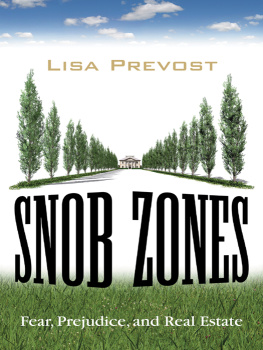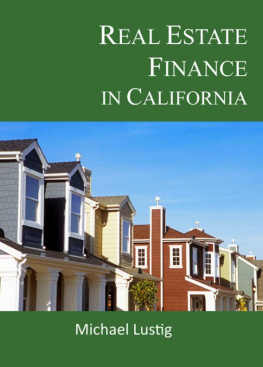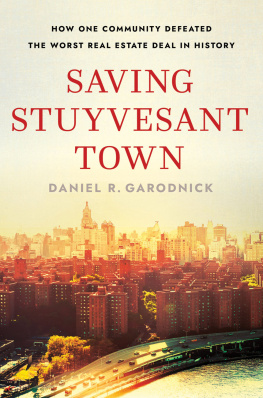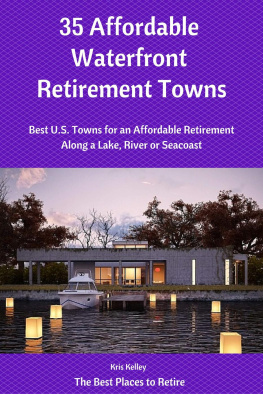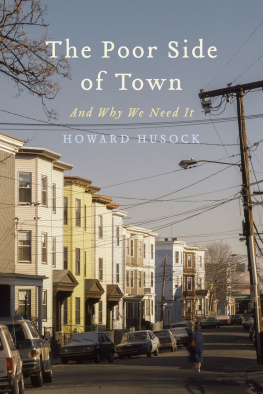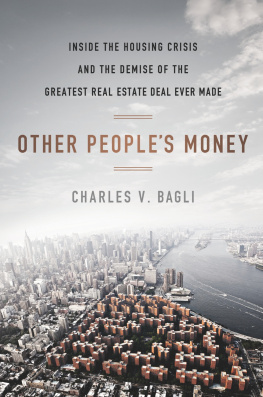
CONTENTS
INTRODUCTION
T HIS BOOK BEGAN WITH a startling display of rude behavior. It was 2005, and I was covering a zoning hearing in Darien, Connecticut, an outwardly refined suburb known for its preppy, members-only mentality. This was a public hearing, meaning that the public was invited to come and complain about the development proposal under consideration. Rare is the human anywhere who shows up for one of these hours-long, weeknight meetings because they wish to compliment the developer. The citizens who do turn out are usually the handful of neighbors who live within view of the building site. But on this particular fall evening, the project in question was objectionable enough to have drawn a crowd of nearly three hundred.
Businessmen fresh off the train, older women settled in with laps full of knitting or magazines, serious-faced young couples in hushed conversationthe chairs in the Town Hall auditorium were nearly full by the time I arrived. I had an inkling of how the evening was going to go before I even stepped through the door. As I walked across the dark parking lot, a man a few steps behind me greeted a local television cameraman like this: I cant believe youre here. Why dont you fucking shoot something else?
The developers received a similarly warm reception. Throughout their presentation, the audience loudly snickered and hissed. Now, this might not have been so surprising in some northern backwater or a scrappy blue-collar burb. But this was Darien, and this wasnt just some average audience. This audience was made up of people who live in one of the most highly educated, exceedingly affluent communities in the country. These were people who had presumably learned their manners early on and refined them over time at one of the eight members-only clubs in town. And yet, here they were, receiving a scolding from the commission chairman for their discourteous and disruptive behavior.
What was it that not only brought out such a large crowd this evening but also brought out the worst in them? What made them feel so threatened? The news article I wrote immediately after that hearing came to a succinct conclusion: Darien residents were furious about a proposal to drop some affordable housing for seniors into an expensive neighborhood of single-family homes. Only this: the reaction that night seemed so out of proportion to the project at handtwenty condominiums, six of them reserved for moderate-income seniorsthat writing it off as simple NIMBYism felt disingenuous. Were people really this incensed because, as they had said, traffic might increase or because emergency vehicles might have a hard time getting in and out of the housing complex?
In the years since that night, I have delved much more deeply into the circumstances surrounding this conflict and numerous others like it in towns rich and not-so-rich.
I have waded into the hysteria surrounding a proposal for high-density cottage housing in a bedroom community more comfortable with five-thousand-square-foot colonials.
I have picked through the past of a quiet lake town that, despite its live free or die leanings, put a blanket ban on construction of multifamily housing.
I have searched for the dividing line between principled opposition and prejudice in a fishing village nearly torn in two by a modest proposal for six subsidized apartments for agricultural workers.
I have overstayed my welcome in a summer resort community where moneyed interests use their control of shore properties to keep fishermen and beachgoers at bay.
These clashes, laid out here by location, were not hard to find. Nor are they anomalies. These sorts of dramas play out with such regularity in what real estate agents refer to as desirable communities that the term NIMBYism has become a clich. In fact, the very frequency of these battles, as well as the predictability of opponents arguments, speaks to the assumed entitlement that is the subject of this book. It is a reflection of the widespread belief among homeowners that they have the right to restrict access to their community and limit other peoples property rights for their own benefit. What gives them this power? The local authority to write zoning laws for their town.
In the broadest sense, zoning authority is a useful planning tool for safely and efficiently separating land uses for the good of the community. It prevents a slaughterhouse from opening up shop next to a school. It keeps developers from jamming in houses on every available vacant lot. But there is a point at which controls on growth and development cross the line to unnecessary, purely self-interested exclusion. And what I found in town after town is that many homeowners are more than willing to cross that lineand feel fully justified in doing so. They move to a place because they like the neighborhood or the schools, and then they expect that it will never change. They choose a place for the people like us factor, a place where they can feel comfortable that their kids will grow up around kids of the same class. They find a place that is still relatively undeveloped and figure this, at last, will be their escape from the complexities and compromises of more populous places. They come with all these expectations, and then when development challenges those expectations, as it inevitably will, they go straight to the local zoning code to point out that we dont allow for this type of thing.
These were the words of a woman in the sparsely populated lake town I visited where a small affordable-housing complex was proposed for the village center. This woman said that before shed moved to town, shed checked out the zoning and was reassured to see that it did not allow for construction of any type of multifamily housing. This, she decided, was a place she wanted to be. Here was a place where the zoning was, in her words, strict.
Strict is the polite term for what she was talking about. Strict zoning is prohibitive zoning, or what is less politely known as snob zoning. This is zoning that blocks or sharply limits development of multifamily housingsubsidized housing, market-rate apartments, duplexesand, in some cases, any residence that doesnt claim at least an acre of land. It is zoning designed to keep things a certain way for certain people. Homeowners in these towns tend to view multifamily housing proposals as an attack on the sanctity of local controlhence, the overwrought scene in Dariens town hall. Homeowners have conflated the right to regulate land uses for the public good with the right to excludenot just uses, but people.
This is preservation of self-interest, plain and simple, a predictable human response. But in breaking down the arguments of the most vocal development opponents, the ones who typically draw the most attention and gain the most traction, I often found that what they considered threats to their self-interest were nothing more than figments of their irrational fears, misconceptions, and, yes, outright prejudice. This was particularly true when the project at hand involved affordable housing. Even though the workforce housing of today bears no resemblance to the public housing high-rises of the pastthe poster child being Chicagos notoriously crime-ridden Cabrini-Greenlocal opposition is still one of the greatest impediments to its construction. Certainly some projects are more worthy of support than others, but towns would be a lot better off if they dedicated even half the time and money they spend on fighting affordable-housing developers to figuring out ways to create such housing on their own terms. Like it or not, were in a sad state of affairs, Bob Engler, a veteran affordable-housing consultant in Massachusetts, told me. It took us a hundred years to get from the end of the Civil War to the Civil Rights Act. [We have] forty years of history in affordable housing, and were still arguing about the same things.

